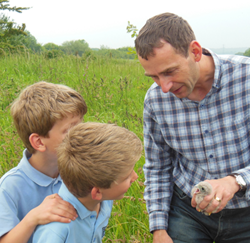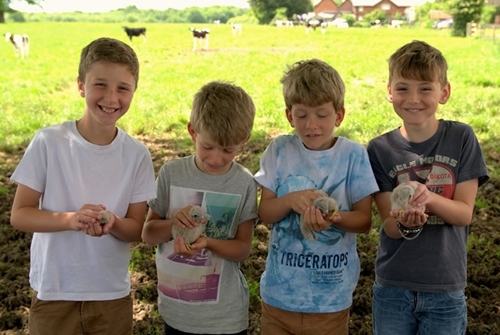by Dr Francis Buner, Senior Conservation Scientist, GWCT
 Have you ever asked yourself why bird ringing is still necessary in a century of fast-advancing tracking technology? Well, if you fancy a very in-depth answer I highly recommend this article written by Ian Newton, one of the most influential ornithologists of the present day.
Have you ever asked yourself why bird ringing is still necessary in a century of fast-advancing tracking technology? Well, if you fancy a very in-depth answer I highly recommend this article written by Ian Newton, one of the most influential ornithologists of the present day.
One of Ian’s many fields of expertise is raptors and although many of these beautiful birds divide opinions – think hen harriers, for example – I personally admire them.
Being a gamebird conservationist, I am often asked whether I hate raptors. No, is my decisive answer. They are fascinating creatures, truly amazing in their abilities to hunt down prey and certainly one of the true wonders of evolution.
Raptors deserve our respect like any other bird even though, in some circumstances, they can have significant impacts on prey populations: for instance the sparrowhawk can be quite devastating for grey partridges, especially where late winter cover is lacking between February and May.
I would argue that there can’t be many children who aren’t fascinated by raptors – especially owls (thanks to the unprecedented popularity of Harry Potter and other more vintage children’s books) and, probably not by coincidence, the barn owl made it to second place as Britain’s National Bird recently.
What better way to open a young person’s mind to the wonders of nature than showing them up close. Of course, we must never disturb birds just for pleasure, but the opportunity to collect useful data such as breeding success, adult survival and dispersal, and combining it with teaching the new generation can’t be a bad thing, can it?

Having the opportunity to hold a kestrel chick clearly makes these children smile!
So, taking advantage of 19 barn owl and nine kestrel boxes installed at Rotherfield over the past three years, June is the month to check upon progress (please be aware that a special licence from the BTO is required to do this legally). After last year’s record year, we were eager to know what this year holds in stock. Unfortunately, things are not looking quite as good this year. The cold spring combined with presumably lower abundance of voles has taken its toll on the body condition of parent birds. And this despite all the excellent habitat around!
The tally is three barn owl broods with three chicks each plus two barren pairs, five kestrel broods (3-4 young), one red kite brood and an estimated 7-10 pairs of buzzards, 4-7 sparrowhawks, 2-3 little owls and at least 10 tawny owls, whose nests we are unfortunately unable to monitor in great detail owing to a lack of manpower.
Additionally, a hobby is regularly seen hunting over Rotherfield, but seems to nest off the project area. All in all still not bad for an area of roughly 1,500ha of mixed farmland and woodland in east Hampshire!
Monitoring raptor numbers is of high importance to illustrate the benefits of our game restoration project and its impacts on other wildlife. Being able to spark some young people’s enthusiasm at the same time makes the hard work all the more rewarding.